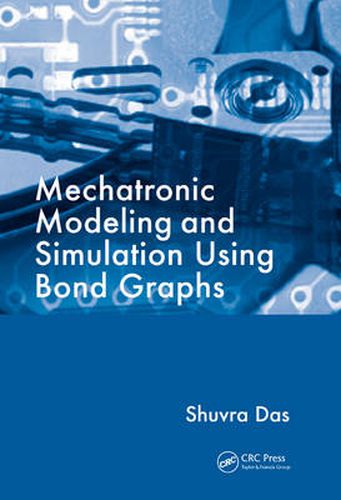Readings Newsletter
Become a Readings Member to make your shopping experience even easier.
Sign in or sign up for free!
You’re not far away from qualifying for FREE standard shipping within Australia
You’ve qualified for FREE standard shipping within Australia
The cart is loading…






Bond graphs are especially well-suited for mechatronic systems, as engineering system modeling is best handled using a multidisciplinary approach. Bond graphing permits one to see the separate components of an engineering system as a unified whole, and allows these components to be categorized under a few generalized elements, even when they come from different disciplines. In addition to those advantages, the bond graph offers a visual representation of a system from which derivation of the governing equations is algorithmic. This makes the design process accessible to beginning readers, providing them with a practical understanding of mechatronic systems. Mechatronic Modeling and Simulation Using Bond Graphs is written for those who have some hands-on experience with mechatronic systems, enough to appreciate the value of computer modeling and simulation. Avoiding elaborate mathematical derivations and proofs, the book is written for modelers seeking practical results in addition to theoretical confirmations. Key concepts are revealed step-by-step, supported by the application of rudimentary examples that allow readers to develop confidence in their approach right from the start. For those who take the effort to master its application, the use of bond graph methodology in system modeling can be very satisfying in the way it unifies information garnered from different disciplines. In the second half of the book after readers have learned how to develop bond graph models, the author provides simulation results for engineering examples that encourage readers to model, simulate, and practice as they progress through the chapters. Although the models can be simulated using any number of software tools, the text employs 20Sim for all the simulation work in this text. A free version of the software can be downloaded from the 20Sim Web site.
$9.00 standard shipping within Australia
FREE standard shipping within Australia for orders over $100.00
Express & International shipping calculated at checkout
Bond graphs are especially well-suited for mechatronic systems, as engineering system modeling is best handled using a multidisciplinary approach. Bond graphing permits one to see the separate components of an engineering system as a unified whole, and allows these components to be categorized under a few generalized elements, even when they come from different disciplines. In addition to those advantages, the bond graph offers a visual representation of a system from which derivation of the governing equations is algorithmic. This makes the design process accessible to beginning readers, providing them with a practical understanding of mechatronic systems. Mechatronic Modeling and Simulation Using Bond Graphs is written for those who have some hands-on experience with mechatronic systems, enough to appreciate the value of computer modeling and simulation. Avoiding elaborate mathematical derivations and proofs, the book is written for modelers seeking practical results in addition to theoretical confirmations. Key concepts are revealed step-by-step, supported by the application of rudimentary examples that allow readers to develop confidence in their approach right from the start. For those who take the effort to master its application, the use of bond graph methodology in system modeling can be very satisfying in the way it unifies information garnered from different disciplines. In the second half of the book after readers have learned how to develop bond graph models, the author provides simulation results for engineering examples that encourage readers to model, simulate, and practice as they progress through the chapters. Although the models can be simulated using any number of software tools, the text employs 20Sim for all the simulation work in this text. A free version of the software can be downloaded from the 20Sim Web site.